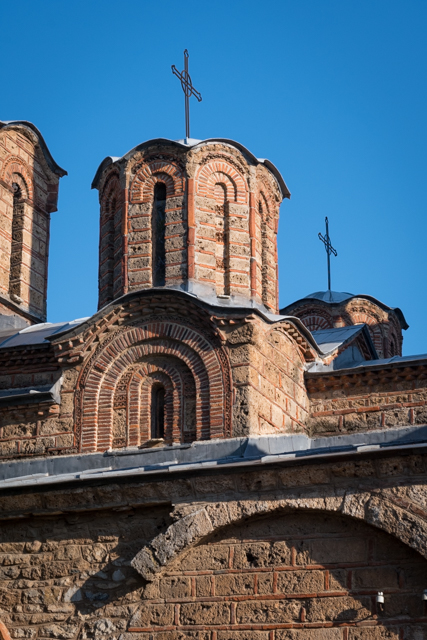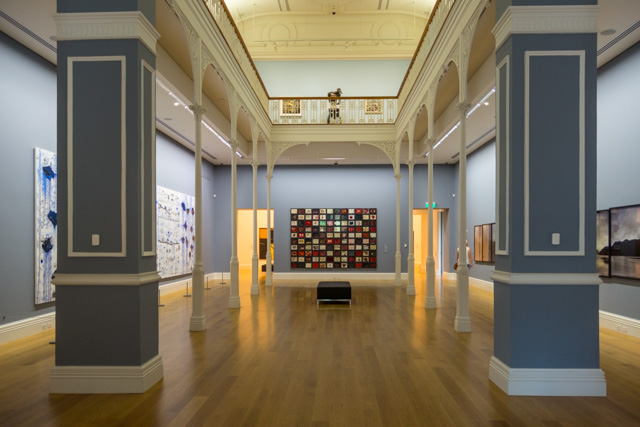












The highlights of last night were the talk of breakfast. We suffered a couple of small earth tremors – one around midnight and one around 2am. We were awake for the first one, our sun cream and water bottles fell on the floor, it was over in seconds. We slept through the second one.
Okay breakfast in the hotel this morning. We weren’t allowed into the dining room a minute before 8:30. We left for our transport for the day at 9:00 – a boat on Lake Ohrid.
Lake Ohrid was formed about 5m years ago. About 2/3 of it belongs to Macedonia and the rest to Albania; the maximum depth is about 290m.
We started our voyage heading south along the shore, there are lots of hotels and resorts along the lake shore. We’re only 3 hours drive from the capital and it gets very busy at the weekends and in the summer.
After about an hour the boat stopped. This was out first swimming stop of the day. The water’s cool and very clear, very refreshing as the sun started to warm us up.
Next stop is the Museum on the Water; this is a reconstruction of a Bronze Age village of stilt houses. These people appear to have invented the overwater bungalows we enjoyed in French Polynesia. The village has about 20 houses made of mud and reeds; the interiors have typical layouts of the time with looms, ovens and simple cooking and sleeping areas.
Back on the lake, we had another swimming stop. This time at the deepest point of the lake – it’s a strange feeling knowing how much water there is below you.
Next stop was at the Monastery of Saint Naum; the saint was responsible for a number of local miracles. The monastery was constructed by the Bulgarians in 905. The small church in the centre of the complex has three small rooms inside, these are all covered with beautiful frescoes. The iconostasis has a painting of the devil; very unusual in any churches anywhere.
After the Monastery we had lunch in a nearby restaurant – even the touristy places here are good quality and good value. We had a few salads and shared a spinach and feta pie.
There were water snakes swimming and basking around the rocks on edge of the lake, fortunately they only like shallow water.
We had one more swimming stop on the way back to Ohrid. The water was cooler there but the sun was warmer so it was still very refreshing. We were about a mile from the lakeshore; the sound of music from a hotel was loud even there.
I finished my book as we sailed back towards Ohrid – The Successor by Ismail Kadare; The book is a political thriller about the death of the nominated successor to the Communist Party of Albania; the leader is assumed to be Enver Hoxha but never named. Was the successor murdered or did he commit suicide? I highly recommend the book.
We had a quick stop to shower and change before heading out for the evening. We walked into the Old Town again, the history of the town is everywhere. The amphitheatre constructed by the Romans is currently being used as the main venue for the Ohrid festival. I visited the church of Saint Sofia, this large church was constructed almost 1100 years ago. Inside it has three aisles with columns in-between, much more open than the layouts at the monasteries we’ve been to.
We’d arranged to meet a couple of our travelling companions in a bar overlooking the lake for a pre-dinner drink, this quickly turned into three drinks. Florence and I had dinner on our own tonight, we found a nice place right by the water, and we were lucky to get a table with a view of St Jovan Kaneo church. Very nice food a Macedonian Pinot Noir to wash it down.
Tomorrow we return to Albania; we chose this trip primarily for Albania and Kosovo but Macedonia has been a revelation – highly recommended, come here soon!

























































































































































